Got milk? New exhibition explores the dark side of dairy
‘Milk’, a new exhibition at the Wellcome Collection, London, explores the socio-political weight of milk through art and cultural artefacts
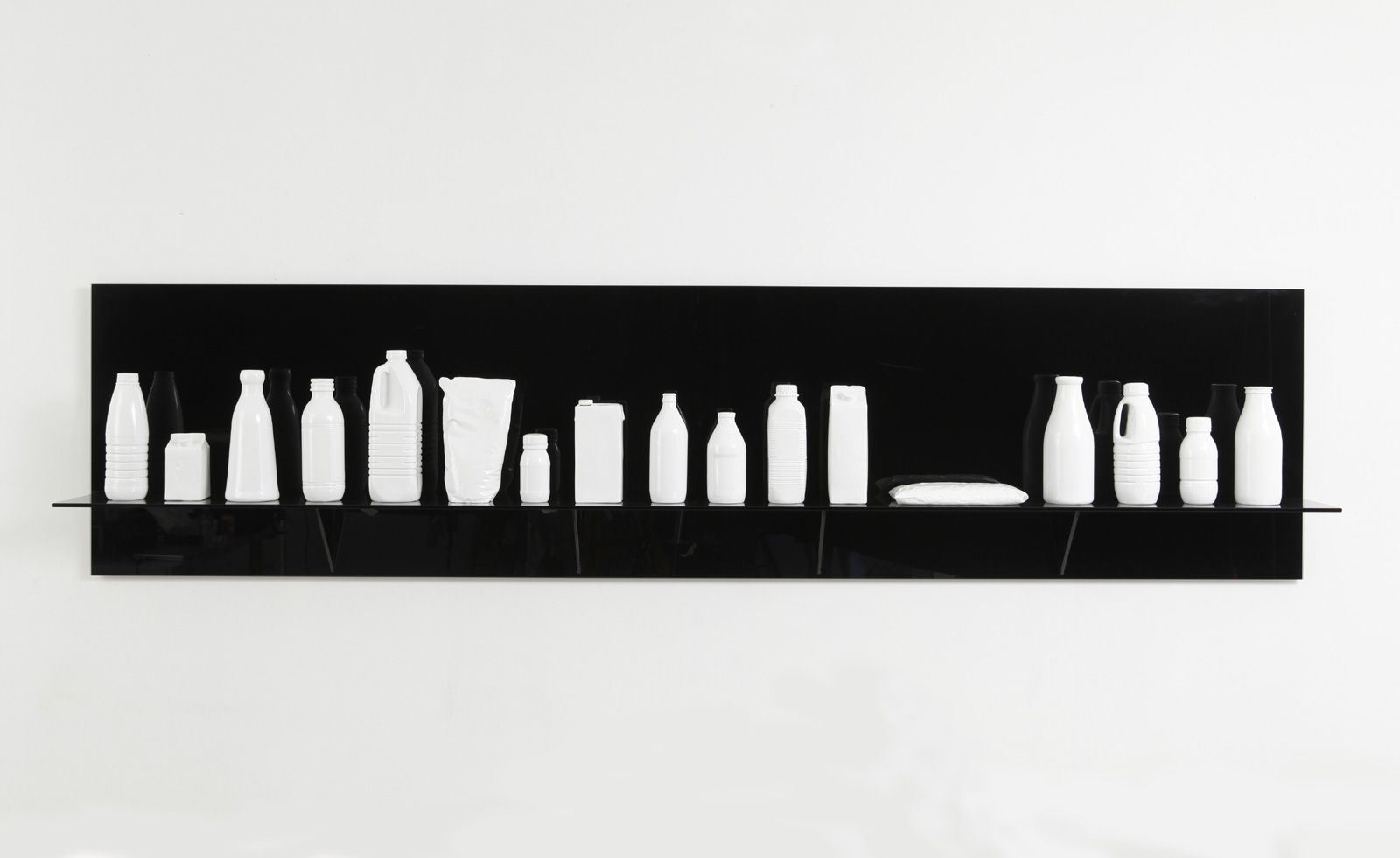
Milk is a tool of empire, a central motif of the maternal body and a staple of the human diet and is unique in its ability to cross political, cultural and economic spheres. Now, the Wellcome Collection knits together these disparate strands in a new London art exhibition, ‘Milk’, which considers everything from the perceived daily healthy habit to milk’s status as a marketing tool for the white nuclear family, alongside a wider consideration of the changing landscape of dairy farming.
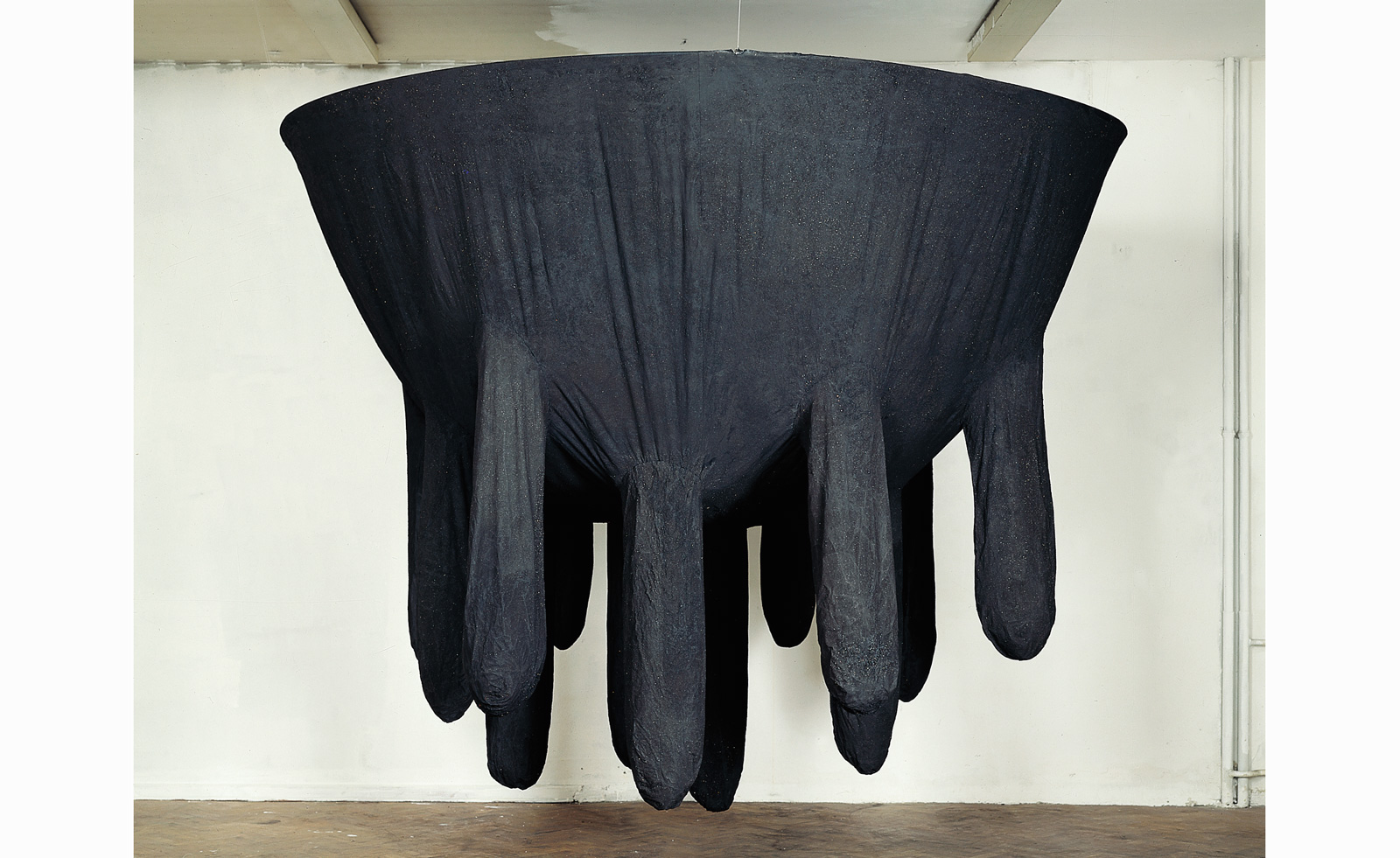
Untitled, Julia Bornefeld, 1995
Milk: exploring the politics of dairy
‘Milk is woven into the everydayness of our lives, whether it’s in a cup of tea or coffee, or in the routines of infant feeding. It’s something many of us in the UK take for granted,’ say exhibition curators Marianne Templeton and Honor Beddard. ‘It’s also a medium through which we can unpick larger questions about our diets and food system, the politics and economics of infant feeding, relationships between humans, animals and the environment. Why do we eat and drink what we do, and who gets to choose what they eat? Milk has been central to many people’s diets in the UK for over a century. Most households still buy dairy milk but there are now many milk alternatives available. We are also at a crossroads for the dairy industry after Brexit, with the potential for new policies to shape the sector and an urgent need for climate-conscious agriculture. At the same time, human milk is making its way into online markets and companies are starting to prototype synthetic versions of human milk.’
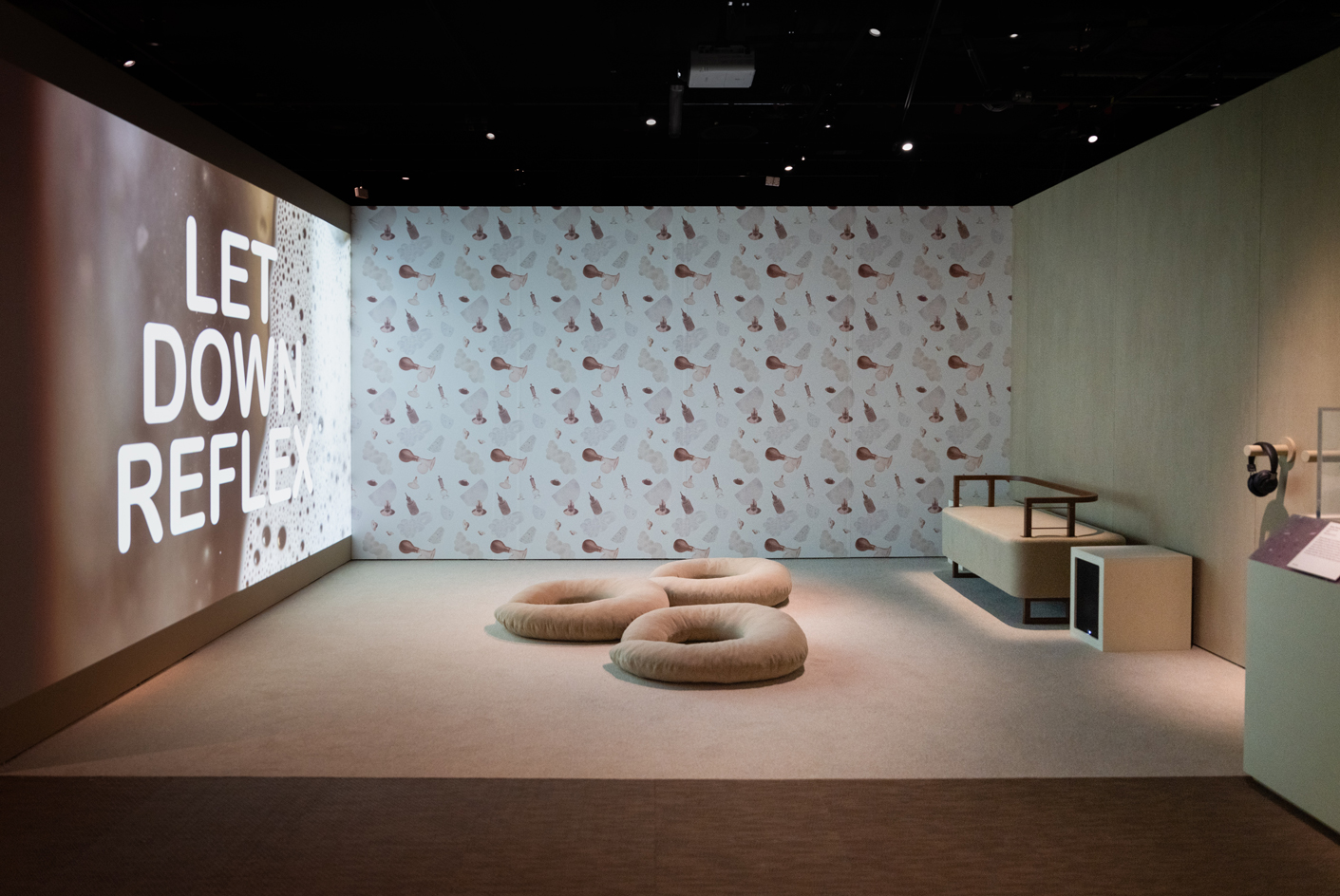
'Milk', Wellcome Collection, 2023
This distinctive status given to milk is here reflected in a mish-mash of media, from historical models in terracotta of a mule carrying cheese, dating from the 3rd or 2nd century BC, to contemporary pieces from artists including Julia Bornefeld, Sarah Pucill, Hetain Patel, and Lucy + Jorge Orta. They join materials, from 1930s marketing to a 19th-century feeding bottle, in a diverse exploration into how milk came to be a staple of our everyday diets. Milk’s political role is due in part to its role in marketing campaigns of white families – the face of milk – but also acknowledges the impact of Herbert Hoover’s eugenicist manipulation of the relationship between ‘natural’ milk and social purity.
These references sit alongside personal narratives that explore the hijacking of the breastfeeding narrative by formula companies, feeding into issues of empire and exploration, a tension expressed in the work of the artists. ‘A new commission by Ilana Harris-Babou, Let Down Reflex, combines personal testimonies about breastfeeding by the artist’s mother, sister and niece with the wider political context that surrounds infant feeding,’ the curators say. ‘It explores the relationship of the individual to maternal health care systems, the inequalities within these structures and how these impact the choices that are available to new parents. The first-hand testimony within this work allows us to think about the passing down of maternal knowledge and how these ideas and beliefs sit alongside public health messaging. The work references the lullaby ‘All the pretty horses’, which was said to have been sung by an enslaved African mother who was separated from her infant in order to care for and wet-nurse her enslaver’s child. Harris-Babou draws links between this traumatic history and the severe inequalities in Black maternal health outcomes seen today in the US and UK.’
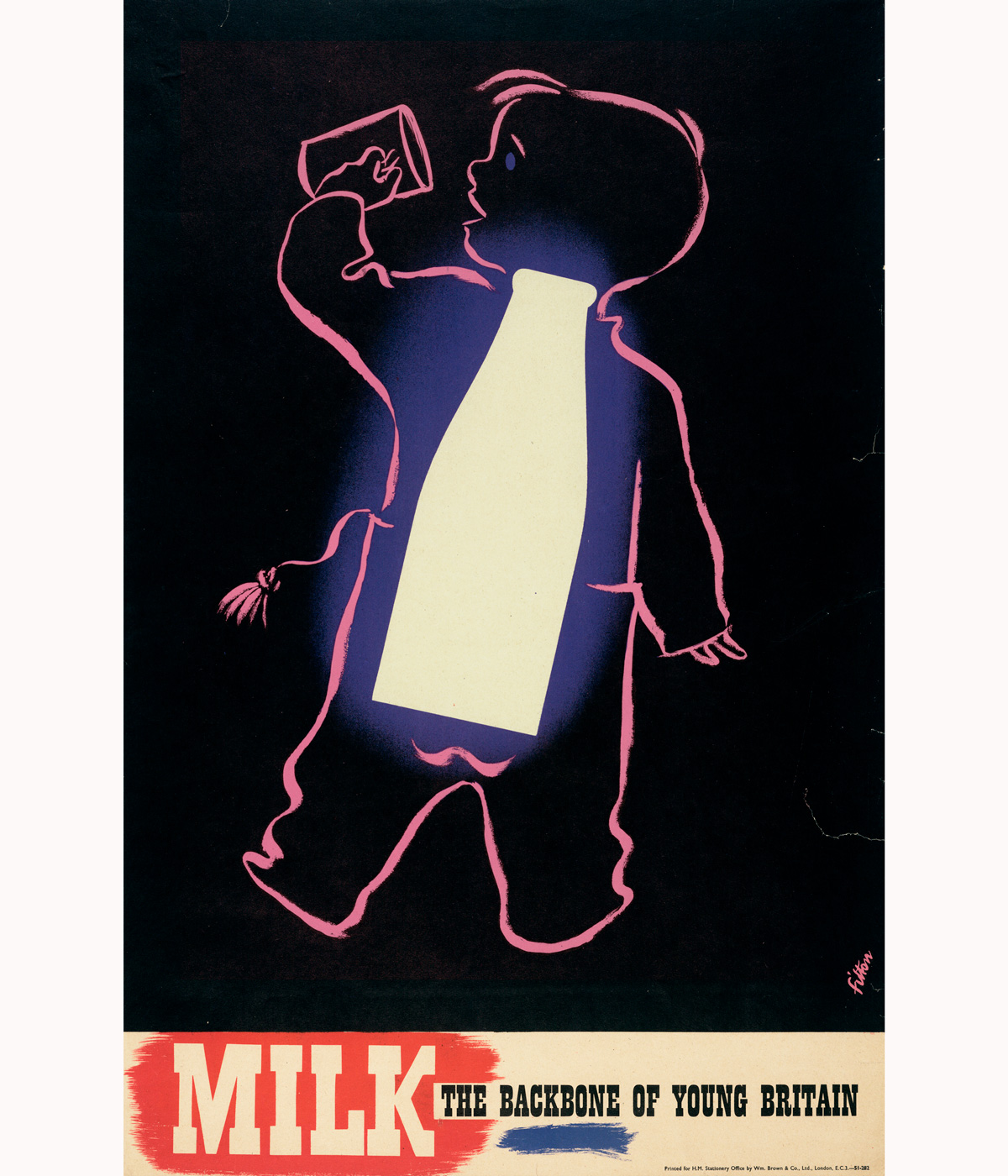
Milk: The backbone of young Britain
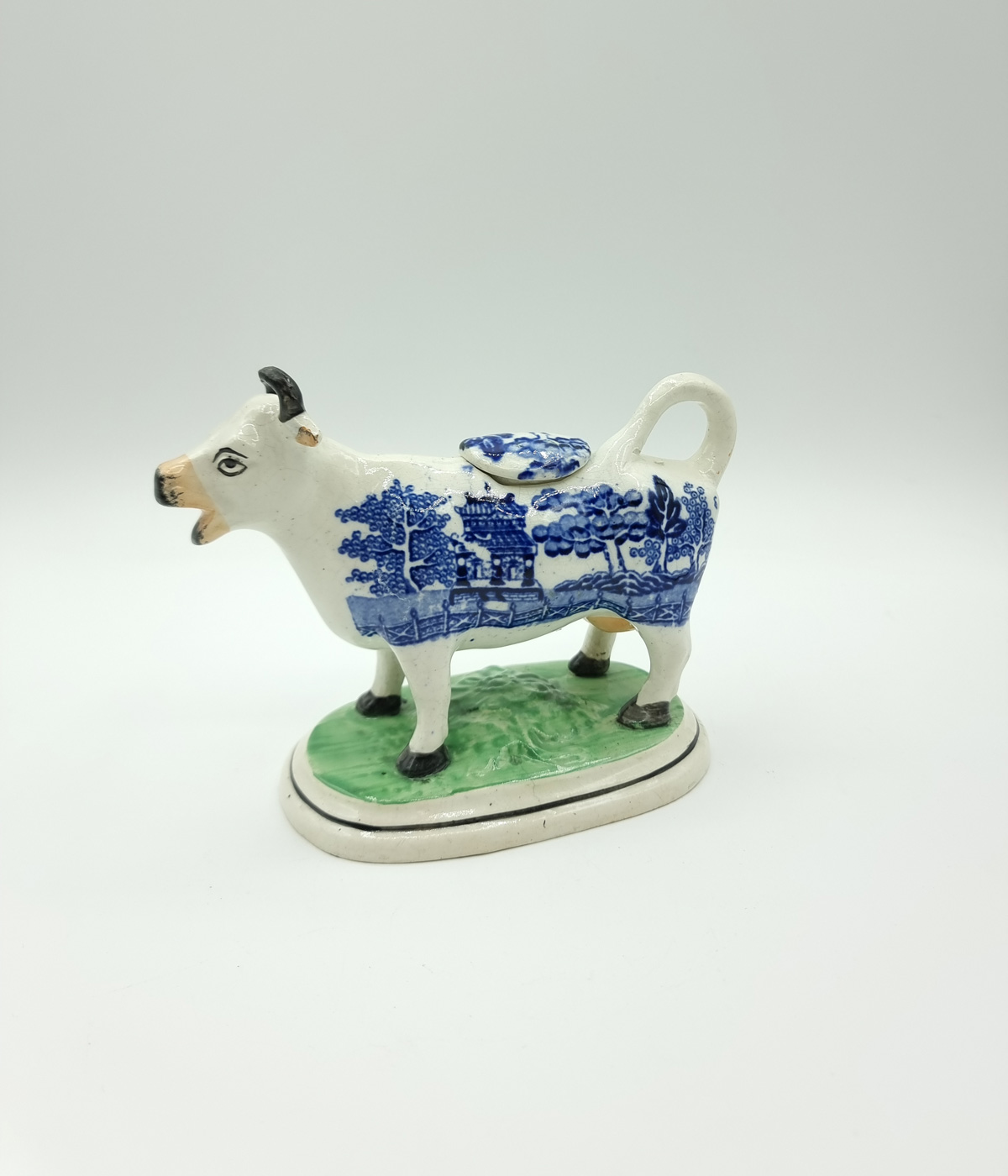
Cow-shaped cream jug. White with blue willow-pattern transfer
The exhibition eschews a strictly chronological order, although the curators point out that to understand the future of milk, the history must be clearly established. ‘What’s remarkable in many cases is that you might be looking at a historical object, but a lot of the questions it raises are still very relevant today. For example, in the section on Scientific Motherhood we have included some crochet infant weighing scales from the 1930s. These would have been used by health visitors during home visits to new mothers to weigh the infant. Those weights would have been plotted on development charts based on standardised weights for the baby’s age. A perceived ‘failure’ to meet these standards or expectations can create feelings of shame or anxiety, even though these standards do not recognise the many different factors that can impact on birth weight, for example health conditions or income. Weighing infants and relying on data and measurements to determine the healthy progress of an infant is still widely debated today, with many feeling it fuels insecurities around insufficient breastmilk that can impede breastfeeding progress.’
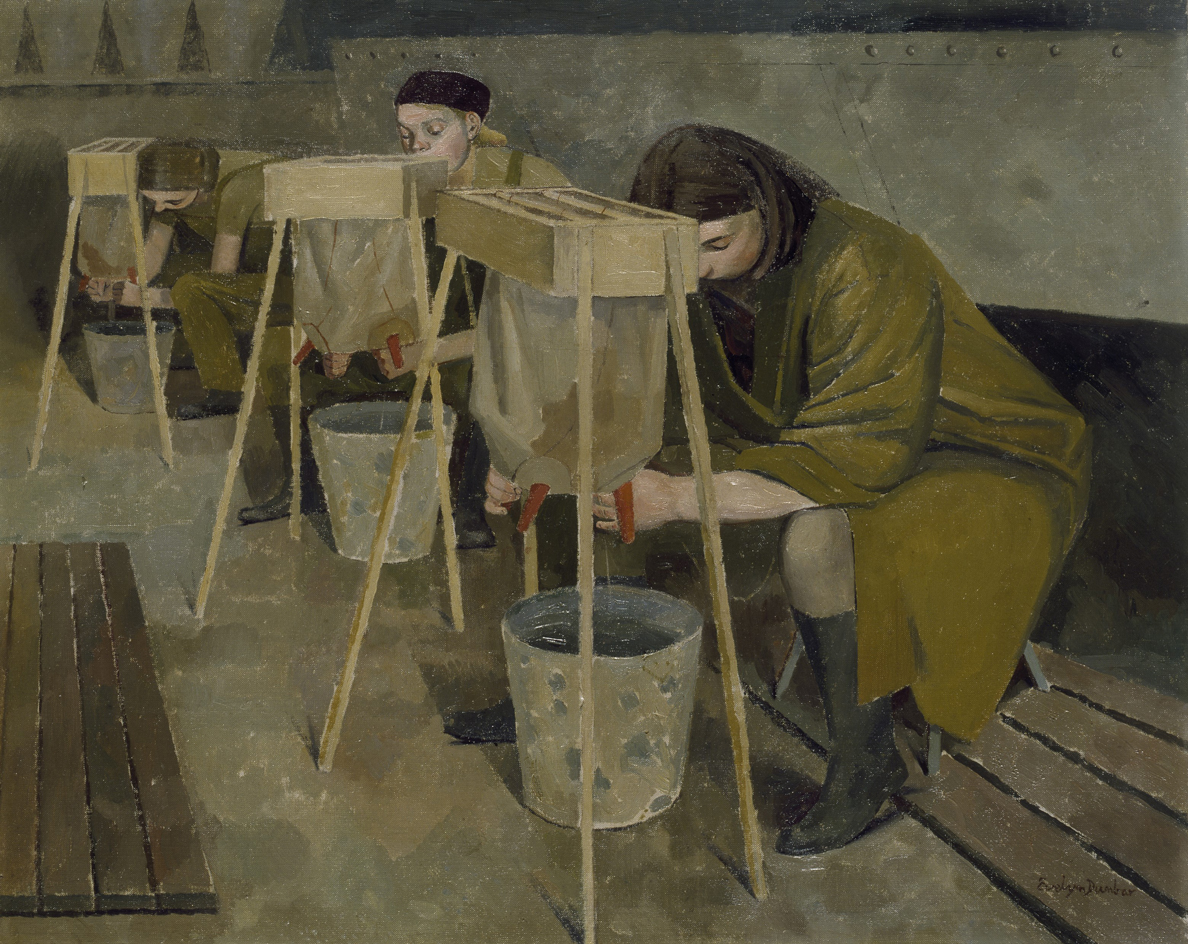
Milking Practice with Artificial Udders, Evelyn Mary Dunbar, 1940
Ultimately, the curators are keen for visitors to consider questions such as why we think milk is so essential to our health, who decides what good health is, what values our food systems are built on and how milk has been used to exert power as well as provide care. ‘Milk is a subject both personal and political, and the exhibition aims to show how it touches on many aspects of our lives, whether we drink it or not,’ the curators add. ‘We hope visitors will consider the impacts of the standardisation and regulation of milk and of the bodies that produce and consume it, and the role science and industry have played in shaping ideas about milk that are present in Britain today.’
Milk is curated by Marianne Templeton and Honor Beddard, it is open until 10 September 2023 and it is free to visit.
Wallpaper* Newsletter
Receive our daily digest of inspiration, escapism and design stories from around the world direct to your inbox.
Hannah Silver is the Art, Culture, Watches & Jewellery Editor of Wallpaper*. Since joining in 2019, she has overseen offbeat design trends and in-depth profiles, and written extensively across the worlds of culture and luxury. She enjoys meeting artists and designers, viewing exhibitions and conducting interviews on her frequent travels.
-
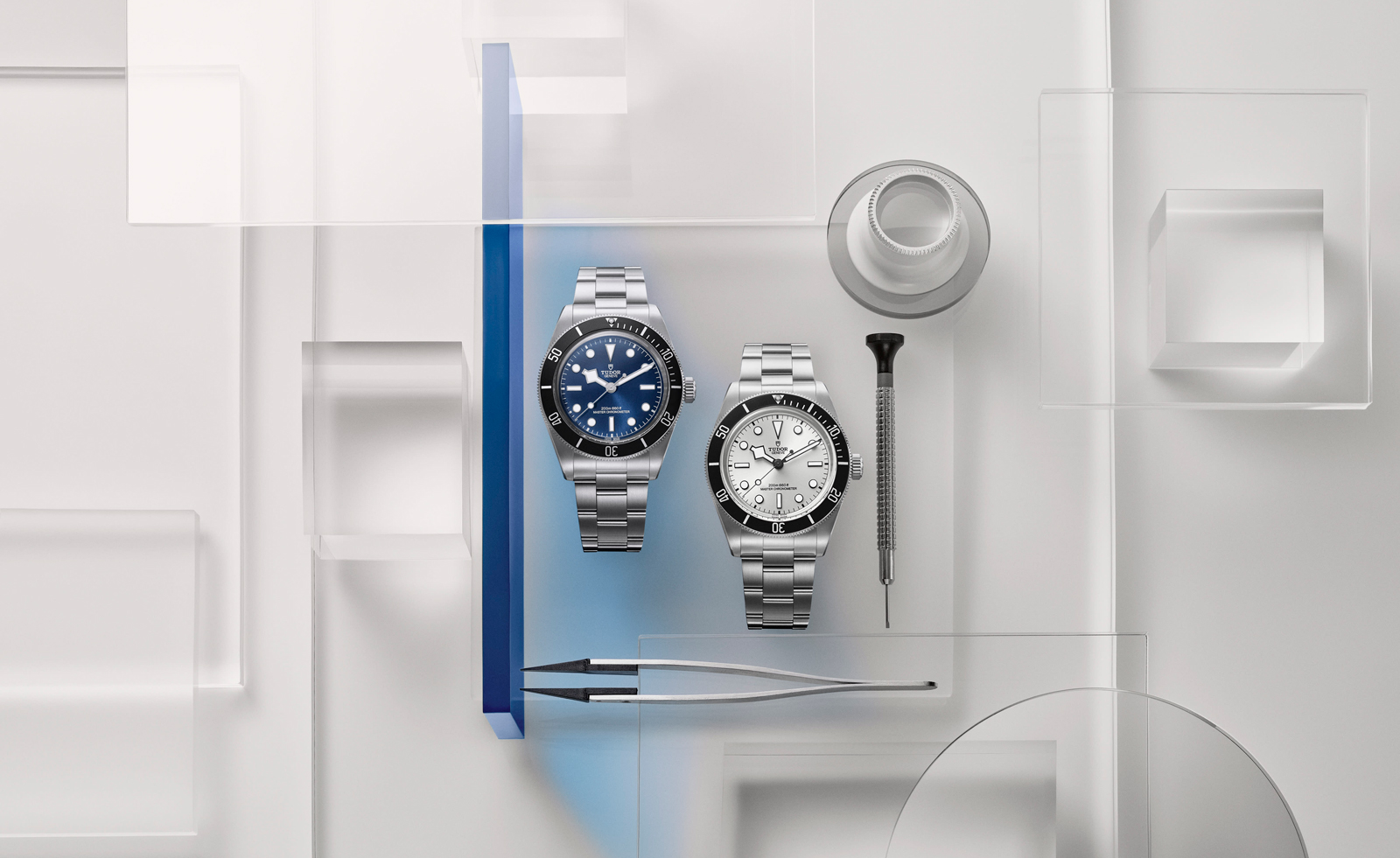 Tudor hones in on the details in 2025’s new watch releases
Tudor hones in on the details in 2025’s new watch releasesTudor rethinks classic watches with carefully considered detailing – shop this year’s new faces
By Thor Svaboe Published
-
 2025 Expo Osaka: Ireland is having a moment in Japan
2025 Expo Osaka: Ireland is having a moment in JapanAt 2025 Expo Osaka, a new sculpture for the Irish pavilion brings together two nations for a harmonious dialogue between place and time, material and form
By Danielle Demetriou Published
-
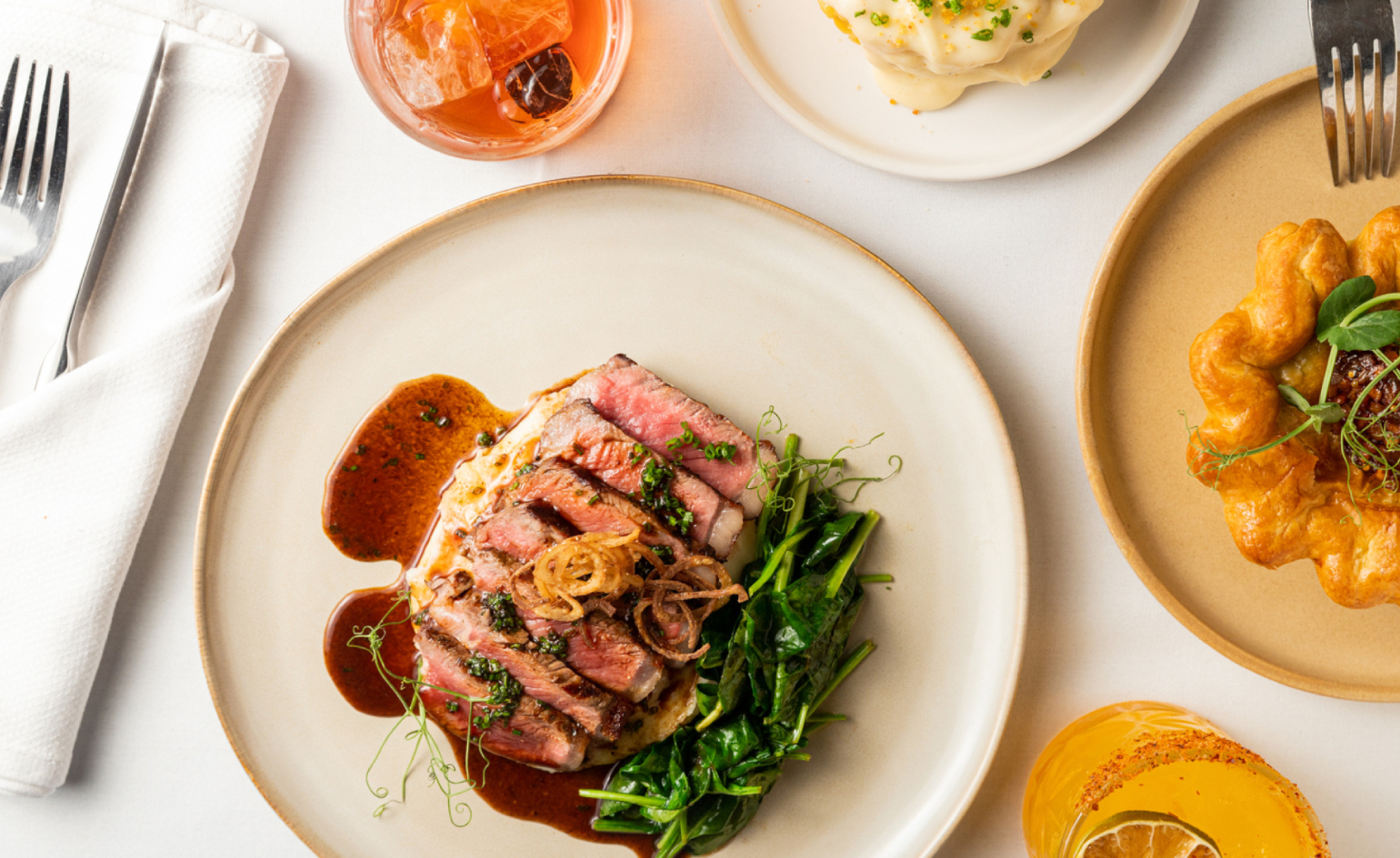 At Linden Los Angeles, classic New York comfort food gets its due
At Linden Los Angeles, classic New York comfort food gets its dueThe restaurant, inspired by a stretch of boulevard bridging Brooklyn and Queens, honors legacy, community and pleasure
By Carole Dixon Published
-
 Artist Qualeasha Wood explores the digital glitch to weave stories of the Black female experience
Artist Qualeasha Wood explores the digital glitch to weave stories of the Black female experienceIn ‘Malware’, her new London exhibition at Pippy Houldsworth Gallery, the American artist’s tapestries, tuftings and videos delve into the world of internet malfunction
By Hannah Silver Published
-
 Ed Atkins confronts death at Tate Britain
Ed Atkins confronts death at Tate BritainIn his new London exhibition, the artist prods at the limits of existence through digital and physical works, including a film starring Toby Jones
By Emily Steer Published
-
 Tom Wesselmann’s 'Up Close' and the anatomy of desire
Tom Wesselmann’s 'Up Close' and the anatomy of desireIn a new exhibition currently on show at Almine Rech in London, Tom Wesselmann challenges the limits of figurative painting
By Sam Moore Published
-
 A major Frida Kahlo exhibition is coming to the Tate Modern next year
A major Frida Kahlo exhibition is coming to the Tate Modern next yearTate’s 2026 programme includes 'Frida: The Making of an Icon', which will trace the professional and personal life of countercultural figurehead Frida Kahlo
By Anna Solomon Published
-
 A portrait of the artist: Sotheby’s puts Grayson Perry in the spotlight
A portrait of the artist: Sotheby’s puts Grayson Perry in the spotlightFor more than a decade, photographer Richard Ansett has made Grayson Perry his muse. Now Sotheby’s is staging a selling exhibition of their work
By Hannah Silver Published
-
 Celia Paul's colony of ghostly apparitions haunts Victoria Miro
Celia Paul's colony of ghostly apparitions haunts Victoria MiroEerie and elegiac new London exhibition ‘Celia Paul: Colony of Ghosts’ is on show at Victoria Miro until 17 April
By Hannah Hutchings-Georgiou Published
-
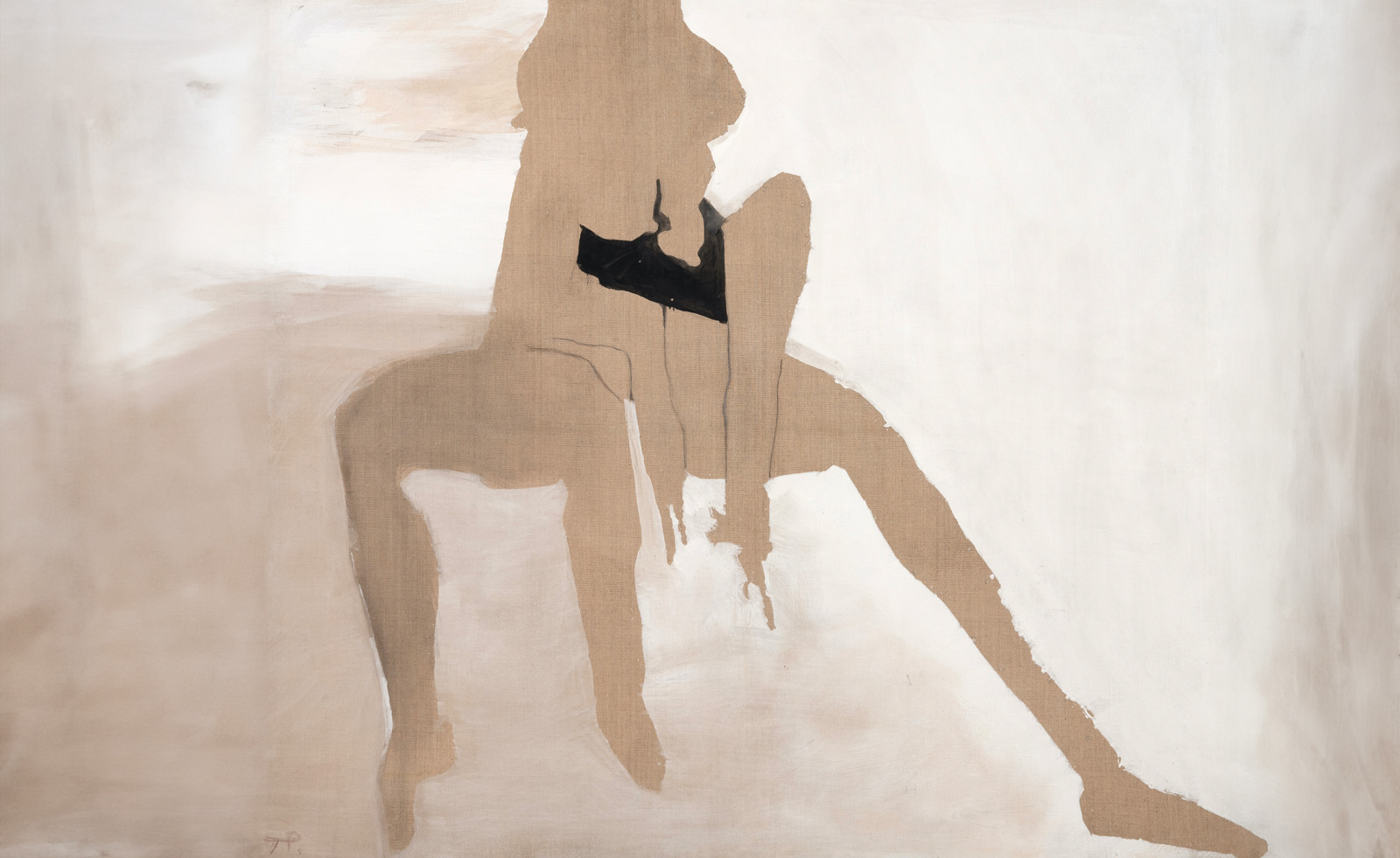 Teresa Pągowska's dreamy interpretations of the female form are in London for the first time
Teresa Pągowska's dreamy interpretations of the female form are in London for the first time‘Shadow Self’ in Thaddaeus Ropac’s 18th-century townhouse gallery in London, presents the first UK solo exhibition of Pągowska’s work
By Sofia Hallström Published
-
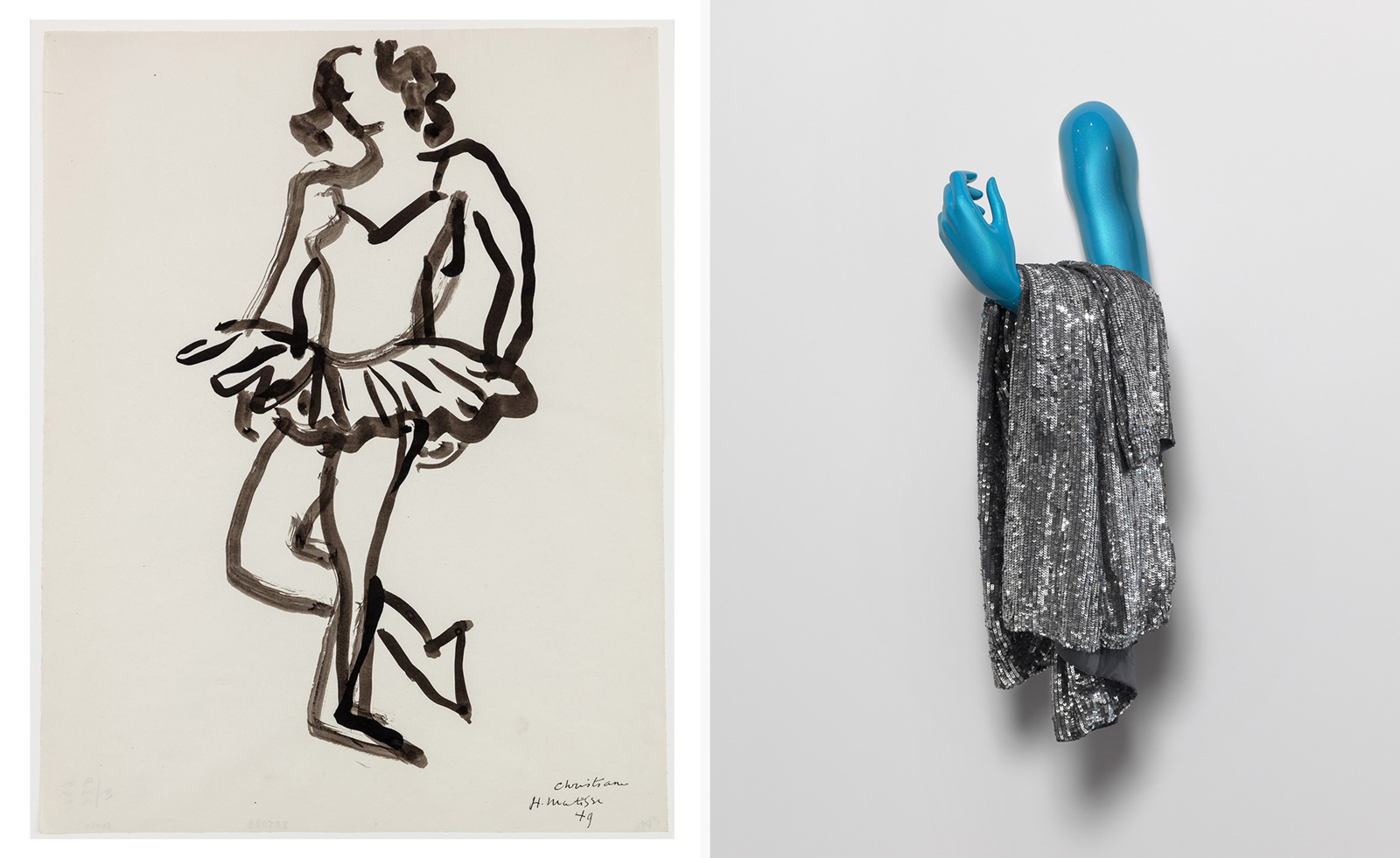 Sylvie Fleury's work in dialogue with Matisse makes for a provocative exploration of the female form
Sylvie Fleury's work in dialogue with Matisse makes for a provocative exploration of the female form'Drawing on Matisse, An Exhibition by Sylvie Fleury’ is on show until 2 May at Luxembourg + Co
By Hannah Silver Published